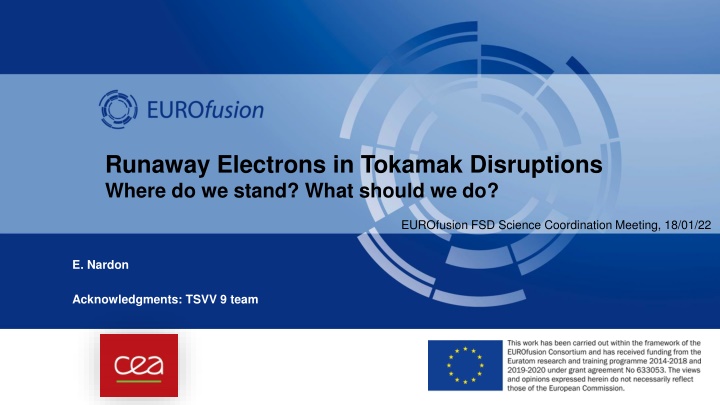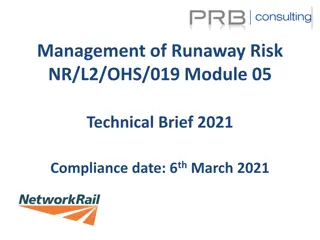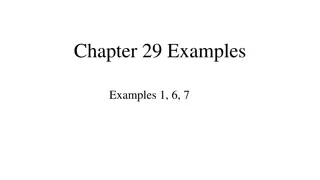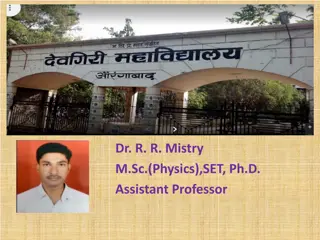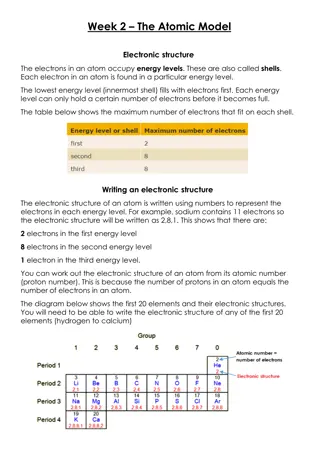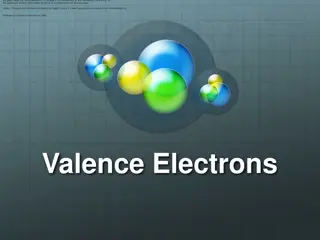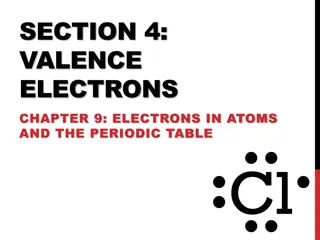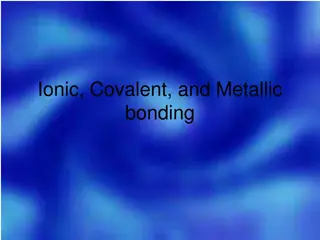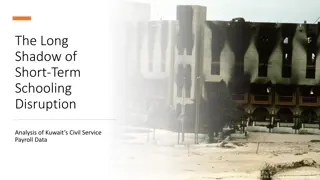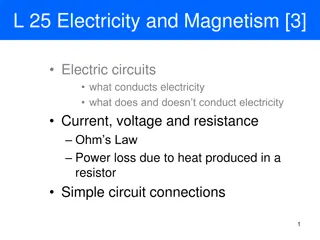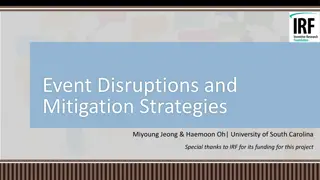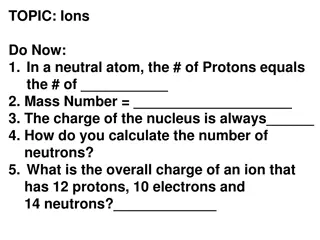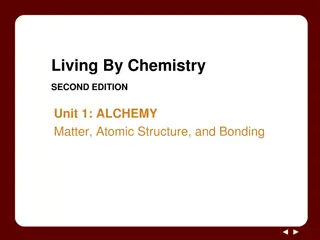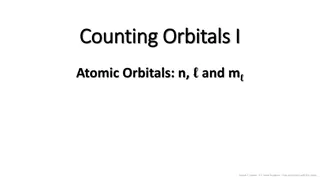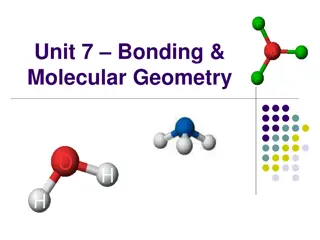Runaway Electrons in Tokamak Disruptions: Current Status and Future Directions
The article discusses the current knowledge and open questions regarding runaway electrons in tokamak disruptions, focusing on prospects for ITER tools and plans. It covers theoretical frameworks, RE generation mechanisms, validation models, and challenges in disruption scenarios. The need for self-consistent RE modeling and implications of 3D MHD factors are highlighted. Overall, the research aims to advance understanding and modeling of runaway electrons in fusion plasmas.
Download Presentation

Please find below an Image/Link to download the presentation.
The content on the website is provided AS IS for your information and personal use only. It may not be sold, licensed, or shared on other websites without obtaining consent from the author.If you encounter any issues during the download, it is possible that the publisher has removed the file from their server.
You are allowed to download the files provided on this website for personal or commercial use, subject to the condition that they are used lawfully. All files are the property of their respective owners.
The content on the website is provided AS IS for your information and personal use only. It may not be sold, licensed, or shared on other websites without obtaining consent from the author.
E N D
Presentation Transcript
Runaway Electrons in Tokamak Disruptions Where do we stand? What should we do? EUROfusion FSD Science Coordination Meeting, 18/01/22 E. Nardon Acknowledgments: TSVV 9 team
Outline Present knowledge and open questions Prospects for ITER Tools and plans E. Nardon | EUROfusion FSD Science Coord. Meet. | 18 Jan. 2022 | Page 2
Outline Present knowledge and open questions Prospects for ITER Tools and plans E. Nardon | EUROfusion FSD Science Coord. Meet. | 18 Jan. 2022 | Page 3
Theory Review papers: [Breizman NF 2019] [Boozer PoP 2015] RE generation mechanisms have been identified and explored theoretically: Primary: Non-nuclear: Dreicer, hot tail Nuclear: Tritium decay, Compton scattering Secondary: avalanche Seminal theory works from several decades ago (e.g. [Rosenbluth NF 1997]) but important recent developments: Effect of partial screening of the nuclear charge of partially ionized impurities [Hesslow JPP 2018] Bound electrons may boost the avalanche [Hesslow NF 2019] Phase space dynamics Theory of 2 threshold E|| fields [Aleynikov PRL 2015] RE vortex [Guo PPCF 2017] Self-consistent model for hot tail generation during a thermal quench [Aleynikov NF 2017] E. Nardon | EUROfusion FSD Science Coord. Meet. | 18 Jan. 2022 | Page 4
RE generation models Validation of RE generation models in quiescent plasmas is well advanced Threshold E||field larger than Connor-Hastie value in several machines [Granetz PoP 2014] Kinetic whistler wave instabilities may play a key role in this [Liu PRL 2018] Models for RE generation during disruptions are not mature yet More difficult than quiescent situations because of 3D MHD Electron transport due to magnetic stochasticity Electron acceleration by large MHD-driven E|| [Sommariva NF 2018] Impurity mixing 3D MHD codes are just beginning to produce ~ plausible disruption simulations [Nardon PPCF 2021] have not yet produced disruption simulations with a self-consistent treatment of REs but test particle studies have been done with JOREK [Sommariva NF 2018] [S rkim ki, in prep.] <3D codes (e.g. ASTRA-STRAHL [Linder NF 2020] or DREAM [Brandstr m MSc 2021]) are more advanced in terms of self-consistent RE modelling but how to take 3D MHD into account? 3D-MHD-related factors are often used as knobs in order to match experimental data Validation or fancy fit ? E. Nardon | EUROfusion FSD Science Coord. Meet. | 18 Jan. 2022 | Page 5
RE beam impact Physics of the RE beam impact is only partly understood Standard RE beam impacts seem to be highly localized rRE~ 1-2 mm allows reproducing post-mortem observed melt pattern on JET [Chen AAPPS 2021] Order of magnitude of rREseems consistent with a Larmor radius Toroidal peaking is observed, e.g. at JET beyond misalignment tolerances [Reux NF 2015] Suggests role of MHD Termination is typically bursty (HXR, magnetics) at DIII-D and JET Due to MHD? Or perhaps to RE filaments [Eriksson PRL 2004]? A large fraction of the magnetic energy can be converted into RE kinetic energy during the termination Crucial in ITER because typically Emag>> Ekin The converted fraction grows with loss/ res[Martin-Solis NF 2014] A fast termination (small loss) with clean a background plasma (long res) is beneficial A proposed ITPA DivSOL/MDC collaboration on the Characterization of power deposition to PFCs by REs is under discussion (coordinators: E. Hollmann, E. Nardon) E. Nardon | EUROfusion FSD Science Coord. Meet. | 18 Jan. 2022 | Page 6
RE beam mitigation Benign RE beam termination observed in JET and DIII-D after a D2SPI into the beam [Reux PRL 2021] JOREK simulations suggest a strong heat flux spreading due to large MHD [Bandaru PPCF 2021] Probably much larger MHD than in standard terminations Absence of Emag Ekin conversion thanks to fast termination and clean background plasma probably also plays a role E. Nardon | EUROfusion FSD Science Coord. Meet. | 18 Jan. 2022 | Page 7
Outline Present knowledge and open questions Prospects for ITER Tools and plans E. Nardon | EUROfusion FSD Science Coord. Meet. | 18 Jan. 2022 | Page 8
The ITER Shattered Pellet Injection (SPI) system Objectives: Thermal load mitigation Electromagnetic load mitigation RE avoidance RE mitigation Up to 24 pellets from midplane (3 different ports) Pellet size ~ wine bottle cork (1 pellet contains ~2 x 1024atoms) Material: Ne+H2 Ne needed to radiate the energy and make the current quench short enough H2may be useful for RE avoidance or mitigation Velocity: a few 100 m/s Shattering by bend at end of flight tube Number & size of shards depend on bend angle and pellet velocity E. Nardon | EUROfusion FSD Science Coord. Meet. | 18 Jan. 2022 | Page 9
Prospects for RE avoidance in ITER (1/3) General considerations: Avalanche gain scales exponentially with Ip Will be >> than in present machines Dreicer seed expected to be negligible (Tesufficiently high during CQ) Hot tail seed hard to predict but could be very large Nuclear seeds small but non-negligible due to huge avalanche gain Increasing neby injecting H2reduces all seeds except Compton Would need to reach ne~ 2-4 x 1021/m3to avoid large beam from Compton-initiated avalanche, according to [Martin-Solis NF 2017] but recent simulations with GO predict that this will not work because of recombination, such that a multi-MA RE beam will form, whatever the assimilated Ne+H2 mixture [Vallhagen JPP 2020] Open question: may MHD instabilities deconfine REs before the beam becomes dangerous? Too slow CQ E. Nardon | EUROfusion FSD Science Coord. Meet. | 18 Jan. 2022 | Page 10
Prospects for RE avoidance in ITER (2/3) Non-nuclear phase may be easier (no Compton source) but hot tail generation remains a risk However, hot tail generation might be suppressed by a 2 step scheme: 1) H2 SPI, 2) Ne SPI [Nardon NF 2020] [Vallhagen, in prep.] H2SPI dilution cooling without immediate TQ, leaving time for electron distribution to cool down to a few 100 eV as a Maxwellian Open question: effect of the drift of ablation plasmoids towards the LFS? Large radial transport of the injected material observed at DIII-D [ShirakiAPS 2021] E. Nardon | EUROfusion FSD Science Coord. Meet. | 18 Jan. 2022 | Page 11
Prospects for RE avoidance in ITER (3/3) Other ideas: RE For the active phase (assuming negligible hot tail seed): post-TQ injection of solid fragments to stop nuclear seeds before they avalanche [Nardon NF 2021] Shard cloud Waves / kinetic instabilities Role of ~MHz modes in RE generation during DIII-D disruptions suggested by observations [Lvovskiy PPCF 2018] Modelling interprets the modes as CompressionalAlfv n Eigenmodes [Liu NF 2021] Exploitable in ITER? Need to avoid collisional damping, i.e. need low enough ne, high enough Te E. Nardon | EUROfusion FSD Science Coord. Meet. | 18 Jan. 2022 | Page 12
Prospects for RE mitigation in ITER (1/2) How much mitigation is needed, i.e. what is the tolerable IREat impact? Estimates based on a scraping-off model ( rRE~ a few mm) and assuming no Emag Ekinconversion give a tolerable IRE(for cooling channel integrity) between ~100 kA and ~3.6 MA depending on hypotheses, e.g. concerning toroidal uniformity [Chen AAPPS 2021] 2D JOREK simulations Injection of high Z material into the RE beam used to be considered as a possible mitigation scheme, but In ITER, high vessel conductivity implies Zp= f(Ip) for fast CQ Strongly limits the possibility to reduce Ipbefore impact Emag Ekinconversion during the termination could be large Pessimistic outlook for strategies based on high Z material injection according to DINA modelling [Konovalov IAEA 2016] Courtesy J. Artola E. Nardon | EUROfusion FSD Science Coord. Meet. | 18 Jan. 2022 | Page 13
Prospects for RE mitigation in ITER (2/2) H2 SPI into RE beam is now considered the best hope for RE mitigation in ITER after promising results at DIII-D and JET. Prospects and open questions for ITER [Paz-Soldan APS 2021]: Shards will probably be sublimated at the edge of the RE beam Subsequent expansion of ablation clouds to be clarified: do clouds stay neutral enough that they can expand across the whole plasma? [Kiramov NF 2020][Samulyak et al., ongoing] If they do not expand much, will the material mix sufficiently fast? [Hollmann APS 2021] Assuming good mixing, recombination can be obtained with the right amount of H2 Possibly key to get fast and large MHD instability clean background plasma Amplitude of MHD modes? Need 3D non-linear MHD modelling, e.g. with JOREK [Bandaru PPCF 2021] or M3D-C1 [Liu APS 2021] Another idea (not assessed yet): spread the impact by applying Resonant Magnetic Perturbations E. Nardon | EUROfusion FSD Science Coord. Meet. | 18 Jan. 2022 | Page 14
Outline Present knowledge and open questions Prospects for ITER Tools and plans E. Nardon | EUROfusion FSD Science Coord. Meet. | 18 Jan. 2022 | Page 15
Tools (TSVV 9) 2 main workhorses : DREAM kinetic code [Hoppe CPC 2021] Solves 1D flux surface averaged transport equations Disruption-oriented (e.g. includes impurities) Self-consistently evolves the electron distribution function using a bounce-averaged kinetic equation JOREK 3D MHD code [Hoelzl NF 2021] Can include REs as a fluid [Bandaru PRE 2019] or as test particles [Sommariva NF 2018] [S rkim ki, in prep.] Other tools: LUKE, ASTRA, ETS, E. Nardon | EUROfusion FSD Science Coord. Meet. | 18 Jan. 2022 | Page 16
Plans (1/2) Mainly covered by TSVV 9 but hope for support from WPTE for validation, + support from IO Simulate RE generation and avoidance in ITER with DREAM and JOREK (revisit GO study) DREAM will provide more precise kinetic effects First investigations on hot tail + stochastic transport published in [Sveningsson PRL 2021] More simulations planned under Chalmers Univ.-IO collaboration agreement JOREK will allow assessing the possible effect of MHD instabilities Planned under IPP-IO collaboration agreement Improve RE generation models in <3D codes: In particular concerning 3D MHD effects: Transport due to magnetic stochasticity Acceleration by MHD-driven E|| Impurity mixing Strategy: Assess effect based on JOREK simulations, e.g. using test particles [S rkim ki, in prep.] [Sommariva NF 2018] Increase our confidence that JOREK captures these effects well Provide reduced models to DREAM and others E. Nardon | EUROfusion FSD Science Coord. Meet. | 18 Jan. 2022 | Page 17
Plans (2/2) Validate DREAM for RE generation Database of pulses Uncertainty quantification Validate JOREK for RE generation For a few pulses, detailed comparison with experimental data using several synthetic diagnostics Assess effect of drift of ablation plasmoids towards the LFS and consequences for 2 step SPI scheme Model RE mitigation by D2/H2 SPI Develop DREAM and JOREK to model self-consistently the RE beam and its background plasma and D2/H2SPI into this system Model the beam termination with JOREK, starting from an MHD stable situation and self- consistently including the background plasma Model the beam termination with DREAM, with ad hoc 3D MHD effects (e.g. from JOREK) Validate against e.g. JET or DIII-D data Make ITER predictions and find optimal strategy Study possible use of (RE-driven or externally injected) waves / kinetic instabilities for RE avoidance or mitigation E. Nardon | EUROfusion FSD Science Coord. Meet. | 18 Jan. 2022 | Page 18
Backup slides E. Nardon | WP TE TF meeting | 15 Nov 2021 | Page 19
K. Srkimki E. Nardon | WP TE TF meeting | 15 Nov 2021 | Page 20
